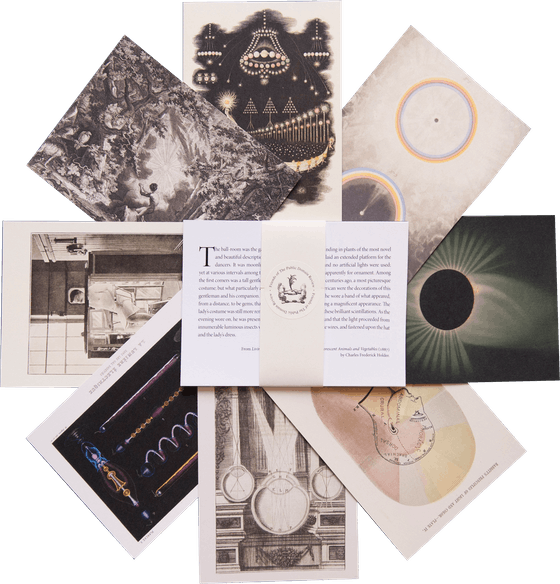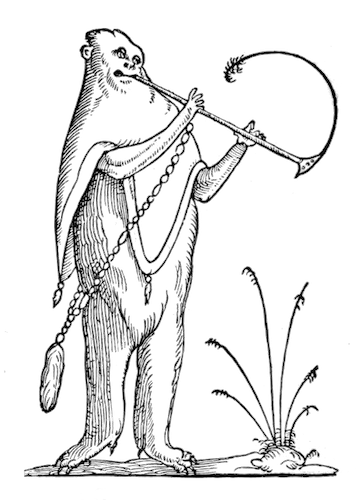
Ostrich Egg-Shell Cups of Mesopotamia and the Ostrich in Ancient and Modern Times (1926)
In the early 1920s, British archaeological excavator Ernest Mackay unearthed an egg at the Sumerian cemetery of Kish, in modern-day Iraq’s Babil Governate. One third of its top had been cut away, the shell roughly smoothed with a primitive sander. It seemed to serve as a kind of drinking cup. The bird, his team had learned, was called gir-gid-da (“the long-legged bird”) or gam-gam (“the benefactor”). As the Kish expedition continued, more shards of ostrich shells were found. This is when the German anthropologist and sinologist Berthold Laufer (1874–1934) took notice.
Ostrich Egg-Shell Cups of Mesopotamia and the Ostrich in Ancient and Modern Times (1926) is exactly how it sounds — an extremely studious, and focused, cultural history of these flightless birds and their embryonic vessels. Laufer begins his treatise with an observation: these eggs were everywhere in the ancient world, found in the prehistoric tombs of Mycenae, Etruria, Latium, Carthage, and Egypt. Persians sent them as tribute to Chinese emperors. Spartans supposedly safeguarded the ostrich-sized egg that Leda once laid, out of which Castor and Pollux hatched. The Garamantes collected the eggs; Arabic poetry sang their praises; Pharaohs dined upon them and wore the bird’s feathers in their hair.
Laufer’s chapters are sorted by region and period. First up is Palestine, Syria, and Arabia. While Leviticus and Deuteronomy classed the bird as unclean, the North African Numidians feasted on the animal. (Citing one Dr. Duncan of the Department of Agriculture, Laufer suggests his contemporaries try ostrich “as a New Year or Easter bird”). Hebrew speakers once called the ostrich bath haya’anah (“daughter of the desert”); Arabic speakers used a similar epithet, naming the bird as the desert’s father, but also the magician, the strong one, the fugitive, the stupid one, and the gray. While writing his treatise, Laufer found ample supplies of ostrich feathers in the souks of Aleppo, Damascus, and Smyrna, and recounts an Islamic legend he heard about the bird’s lackluster wings: competing with a bustard, the ostrich forgot to evoke Allah’s assistance before flying close to the sun. The star scorched the bird’s pinions and the feathers of every generation thereafter.
Much of the delight of this volume comes from the oddity of facts, all pecked out in scholarly fashion. Some are rather grim: the Roman emperor Elagabalus (ca. 204–222) is said to have served 600 ostrich heads at a banquet; the usurper Firmus (d. 375) had a trick to keep the doctor away — he ate an entire ostrich each day. Speaking of eccentric regimens, John Lyly observed in 1579 that “the ostrich digesteth harde yron to preserve his heath”, while Shakespeare elevated this behavior into a threat with Henry VI: “I’ll make thee eat iron like an ostrich”. (Sadly, the bird’s famously ferrous diet, like its ability to make eggs hatch with its eyes, may be little more than myth.) Chinese speakers in the Tang dynasty called ostriches “camel birds”, and reported that East Africans fed their flocks with red-hot copper. The Shilluk and Baggara peoples of Sudan, we are told, have succeeded in taming ostriches to be as docile as chickens.
Toward the book’s close, Laufer’s comparative anthropology defaults upon colonial apologia. Unlike the “barbarous treatment which the poor bird had hitherto received from the hands of African savages”, Afrikaners were able to cultivate a method of domestication with “a charitable attitude and an enlightened method prompted by truly scientific research”. His method for gauging success is based solely on exports, as the South African ostrich feather industry increased its profits by 4130 percent between 1865 and 1913. Despite his rather ecumenical approach to global history, Laufer ends his ostrich treatise with a narrow-minded call, positioning Afrikaners as the driving force of historical progress on the continent: “Civilization, after all, advances: from a mercilessly persecuted and tormented creature we have transformed the ostrich into a happy and contented bird and an eminently useful denizen of our soil. The domestication of the ostrich is a positive contribution to the progress of humanity and humaneness, and may be designated one of the great achievements of modern civilization of which the Africander may justly be proud and for which we have every reason to be grateful to him.”
Mar 12, 2025







